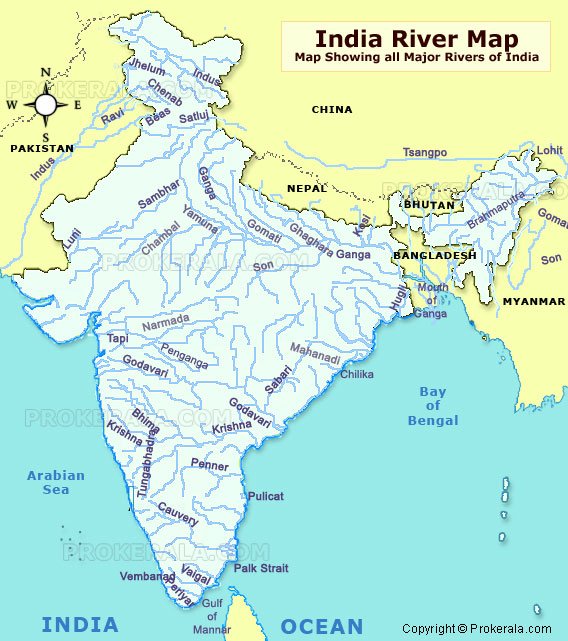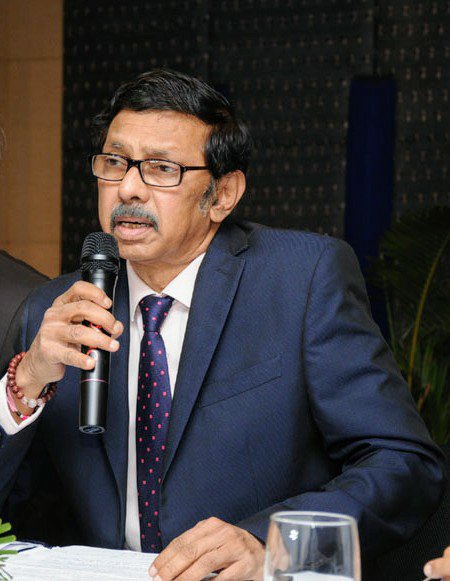Chari: I am a universal soul,
I am a universal soul, free like the soul that is the Brahma soul you see, the cosmic soul. Why am I bound? Because I think I am in this body, I am a slave of my body, I am imprisoned in my body, I am a slave of my bodily desires for pleasure, for satisfaction and for comfort, therefore I am bound. Nothing binds me. In this prapancham [universe], nothing can bind me unless I bind myself.
– Guru Chari Ji
How one apartment in Chennai beat water crisis – The New Indian Express
CHENNAI: While homeowners and residents associations across the city are busy squabbling and haggling with water suppliers, ever since an acute shortage in supply began this summer, those living in an apartment complex in Kazhipattur have been able to keep away from this these troubles.
The 160 families residing at Akshaya Adora have not bought water in the last two years. Instead, they put together a robust water harvesting and recycling system that takes care of all their needs. Water drawn from borewells and an open well at their premises is recycled, eliminating the question of shortage.
Close to 1.5 lakh litres of water used by the residents on daily basis gets treated and harvested.
Read more….
“Rivers of India” a video tutorial

https://youtu.be/999ngrj_BHM/
| The river system of India can be classified into four groups – 1. Himalayan rivers 2. Deccan (Peninsular) rivers 3. Coastal rivers and 4. Rivers of inland water drainage. |
| Luni, Machhu, Banas, Rupen, Saraswati and Ghagghar are examples of rivers with inland water drainage, i.e. they do not empty into the ocean but get lost into the sand. |
| Subarnarekha, Vamsadhara, Nagavali, Vaigai, Netravati and Sharavati are examples of coastal rivers. |
| The longest flowing river in India is the Ganges or Ganga followed by Godavari, Yamuna, Krishna and Narmada. |
| The longest river which flows through India is the Indus which originates in Tibet and enters Pakistan before flowing into the Arabian Sea. |
| The Ganges is also known as the Bhagirathi since King Bhagirath was responsible for bringing it from the heavens to the earth. The part of the River Ganga which flows into Bangladesh is known as Padma. |
| Most of the Indian rivers flow into the Bay of Bengal but some like Narmada,Tapti, Netravathi and Periyar flow into the Arabian Sea. |
| Five rivers of erstwhile Punjab are Sutlej, Ravi, Beas, Jhelum and Chenab |
| The river also known as Dakshin Ganga is Godavari |
| The Brahmaputra is known as Yarlung Tsangpo in Tibet and as Dihang in Arunachal Pradesh. The Brahmaputra river is known as Jomuna in Bangladesh. |
| The river known as Singi Khamban (Lion’s mouth) in Tibet River Indus |
| The river known as Bengal’s sorrow is River Damodar |
| Prayag or Allahabad is believed to be the confluence (sangam) of these rivers Ganga, Yamuna and the mythical Saraswati |
| The number of Indian rivers which have been classified as major rivers by the Government is Twelve. |
| There are three Trans-Himalayan rivers which originate in the high Tibetan Plateau and cut across the mighty Himalayan ranges. Indus, Brahmaputra, and Sutlej. |
Prasar Bharati chief rises to defend Indian Democracy against ‘blatant’ anti-India presentation at a global meet hosted by UK and Canada

Prasar Bharati Chairman, Surya Prakash
As reported by Hindu, Prasar Bharati Chairman Dr. A. Surya Prakash said that Vinod K. Jose, Executive Editor of The Caravan magazine, made a “blatant” anti-India presentation during a session on ‘Religion and the Media’ at the Global Conference for Media Freedom, calling many of his statements “false” and “inaccurate”.
What was really shocking were many a blatant lies by Mr. Jose. Believe it or not he said that “a hundred Christians were murdered in India” and “the RSS engineered the pogrom against the Sikhs in 1984”.
After Jose’s presentation, when the discussion was thrown open to the floor, Mr. Prakash rose to the occasion and said many of the statements made by The Caravan editor were “false” and that there were “inaccuracies” in the presentation.
India was not only the world’s largest democracy, but also the most vibrant. It was also the most diverse society in the world, he added.
Explaining his intervention, Dr. Surya Prakash said that if the audience left the hall believing Mr. Jose, democracy across the world would be in jeopardy. The video below, which documents his intervention is a must watch
The conference was organised jointly by the governments of the UK and Canada.
“I am pained by the decision of the organisers to have given a platform for such a blatant anti-India presentation. I don’t think anyone is furthering the cause of democracy by running down the most vibrant democracy in the world,” Surya Prakash contended. To read the full report click the link below.
In a PTI report published in The Week any initiatives aimed at strengthening media freedom around the world should be focused on deepening the democratic traditions and steer clear of being agenda driven.
“All initiatives for strengthening media freedom are welcome across the world but the only aim should be deepening democratic traditions,” Prakash told PTI on the sidelines of the conference.
“India is not only the world’s largest but also the most vibrant democracy. Such a democratic environment provides a natural vent for all opinions and views,” he said.
Watch “बुंदेलखंड की जल धरोहरों पर साफिया खान से बातचीत, ARVIND, RSTV” on YouTube

Safia Khan has done tremendous work in the area of Bundelkhand heritage and Environment. Here she discusses how ancient Water bodies can be revitalized or restored
India turns 350,000 postmen into bankers for doorstep financial services – Connected To India
India’s 350,000 well-trained postmen have turned bankers, offering doorstep financial services to even the last man standing in the remotest parts of the country.
Till recently, the ubiquitous men in brown serving in the country’s 155,000 post offices located in every nook and cranny had been only delivering letters and parcels.
But now they are making banking easy for even ordinary citizens by going round homes carrying a trendy mobile phone and a hand-held biometric scanner to open savings accounts, transfer money, pay utility bills, accept cash deposits, facilitate withdrawals and what have you.
Read more on the link below…
10 Ways Farmers Are Saving Water | CUESA
As California faces a historic drought, many farmers are relying on groundwater reserves to carry them through the dry season. Pumping groundwater is currently unregulated in California (that could soon change), and drawing on reserves now could cause shortages in the future. Sustainability-minded farmers are looking ahead and using an arsenal of methods to conserve water. Here are just a few.…
Read on
Watch “Saving rain water / Making Swales / Water irrigation in the tropics / Growing food in Asia” on YouTube
The World’s Largest Ocean Cleanup Has Officially Begun
Ambitious dreams have now become a reality as the Ocean Cleanup deploys its $20 million system designed to clean up the 1.8 trillion pieces of trash floating in the Great Pacific Garbage Patch. Check out another Forbes piece on how Ocean Cleanup aims to reuse and recycle the ocean plastic.
Read on…